DEFINITION OF TERMS:
- KEYSTONE means they are listed by National Wildlife Federation as core plants for a wildlife garden in my ecoregion (Ecoregion 8).
- NOT QUITE NATIVE means they are slightly out of range but adjacent to NYS as determined by GoBotany and NY Flora Atlas.
- Otherwise the plant is a NY-native or native to the area noted.
SOUTHEAST NATIVE: Allegheny spurge (Pachysandra procumbens)
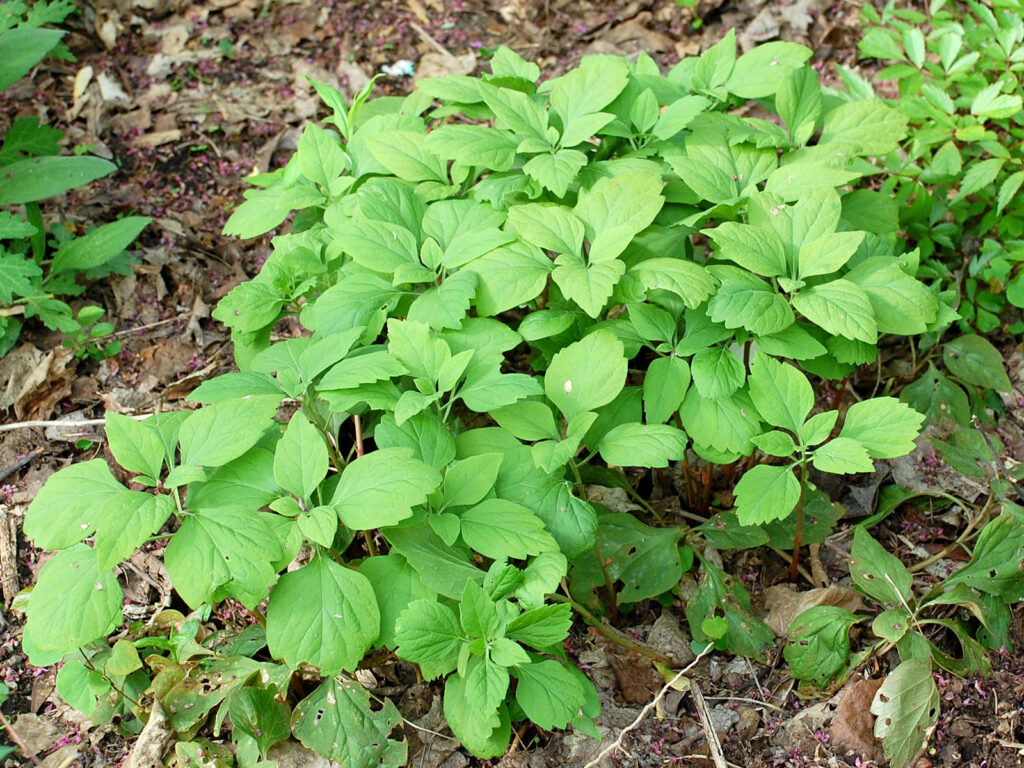
This is what I thought of as the native pachysandra, and like the more-common Japanese pachysandra (a non-native invasive), it’s grown for its leaves, not its flowers.
A big difference between this and the Japanese variety is how slowly it spreads—very, very slowly. Another difference is that it doesn’t have glossy foliage.
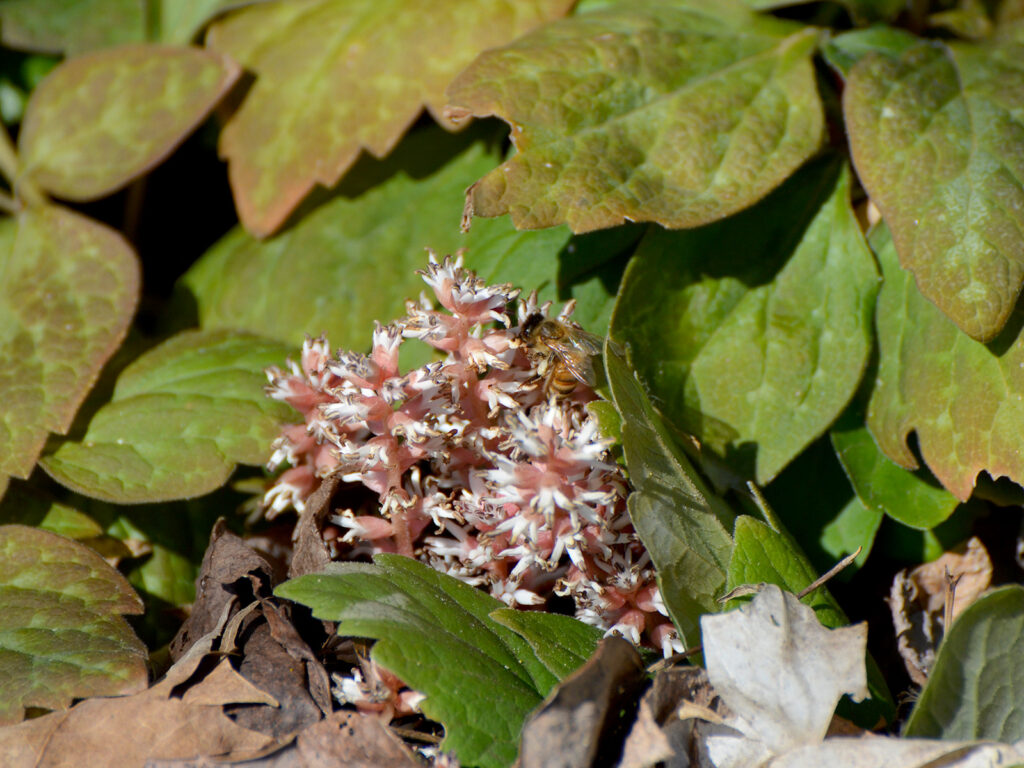
The flowers in the spring are similar to the non-native “regular” pachysandra.
- Learn more:
- Wildflower Center: Allegheny spurge
NOT QUITE NATIVE: Foxglove beardtongue (Penstemon digitalis)
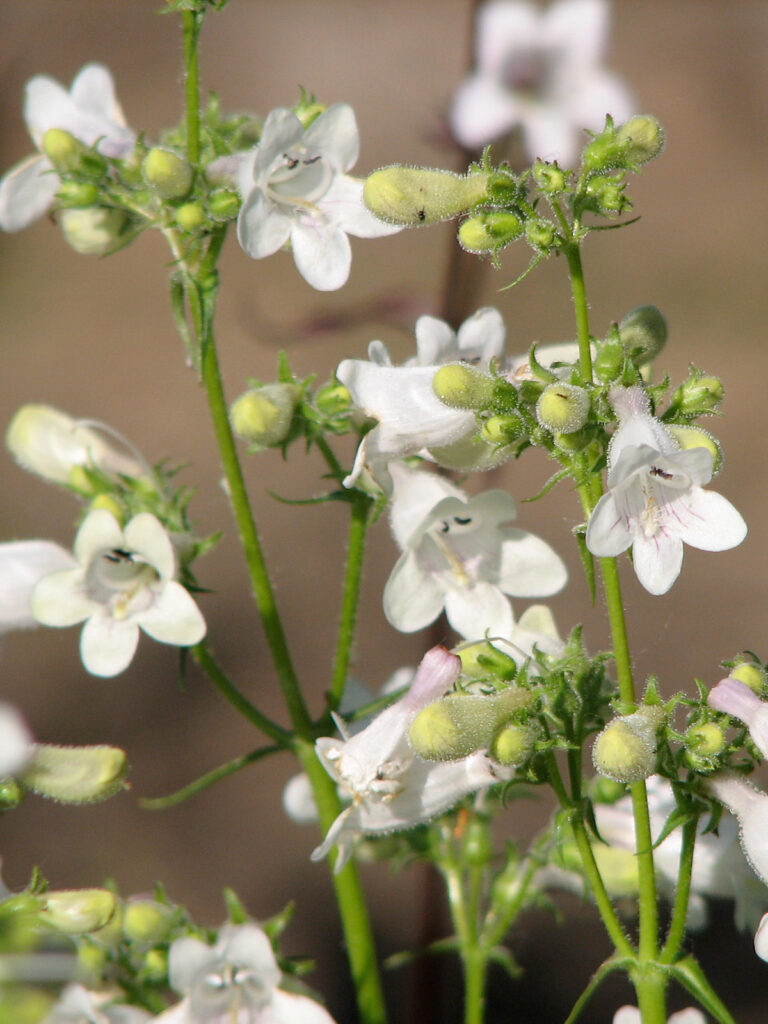
Besides being a beautiful plant, this fills a need for early nectar. The bees love it. It’s the plant from which the ‘Husker Red’ cultivar was selected.
This is a host plant for the Baltimore checkerspot butterfly AFTER the caterpillars have grown a bit. Its host plant for eggs and as small caterpillars is turtlehead (Chelone glabra) ONLY.
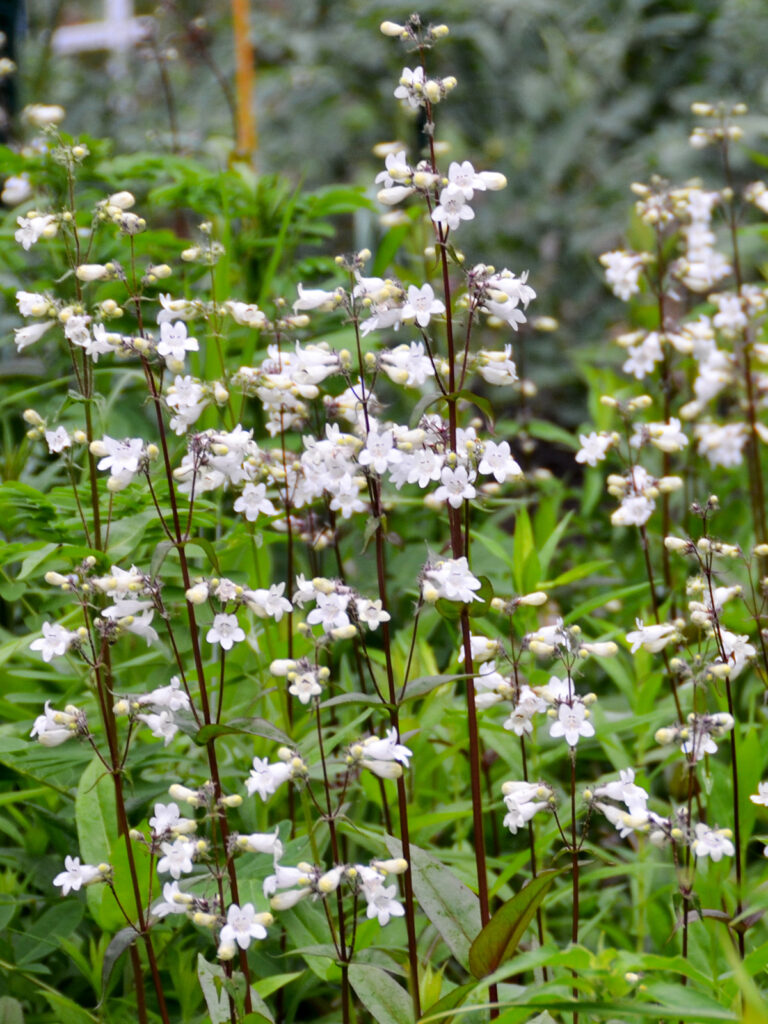
This is the very commonly-sold Husker Red cultivar. Its stems and leaves are red, and its flowers are pale pink, in comparison with the pure white flower of the species. It volunteers generously.
NOTE: Early results from BudBurst have indicated that the Husker’s Red cultivar was the LEAST useful for pollinators, so I’m removing this cultivar and replacing it with the plain species as I have plants.
Unfortunately I think some may have hybridized but I’m not sure.
Wildlife: Hummingbirds, bumble bees
** SPECIAL VALUE TO NATIVE BEES **
** SPECIAL VALUE TO BUMBLE BEES **
- Learn more:
- Wildflower Center: Foxglove beardtongue
Hairy beardtongue (Penstemon hirsutus)
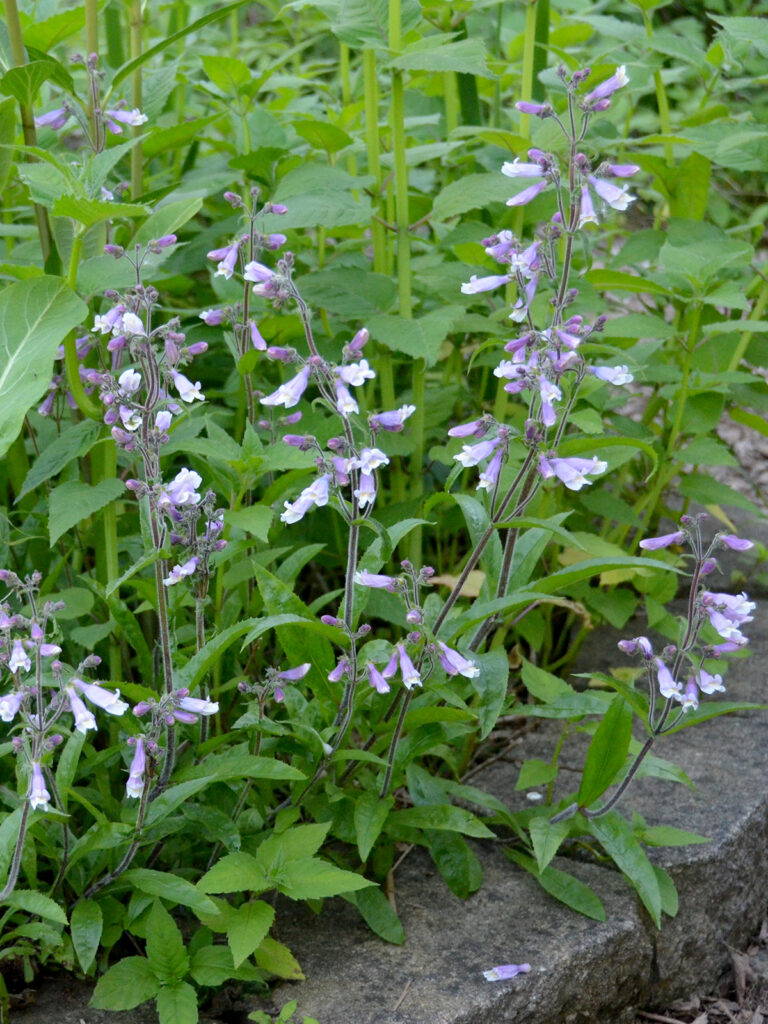
Unlike Small’s beardtongue, this similar-looking plant is native to the Northeast.
Wildlife: Hummingbirds
Larval host: Baltimore checkerspot
** SPECIAL VALUE TO NATIVE BEES **
** SPECIAL VALUE TO BUMBLE BEES **
- Learn more:
- Wildflower Center: Hairy beardtongue
SOUTHEAST NATIVE: Small’s beardtongue (Penstemon smallii)
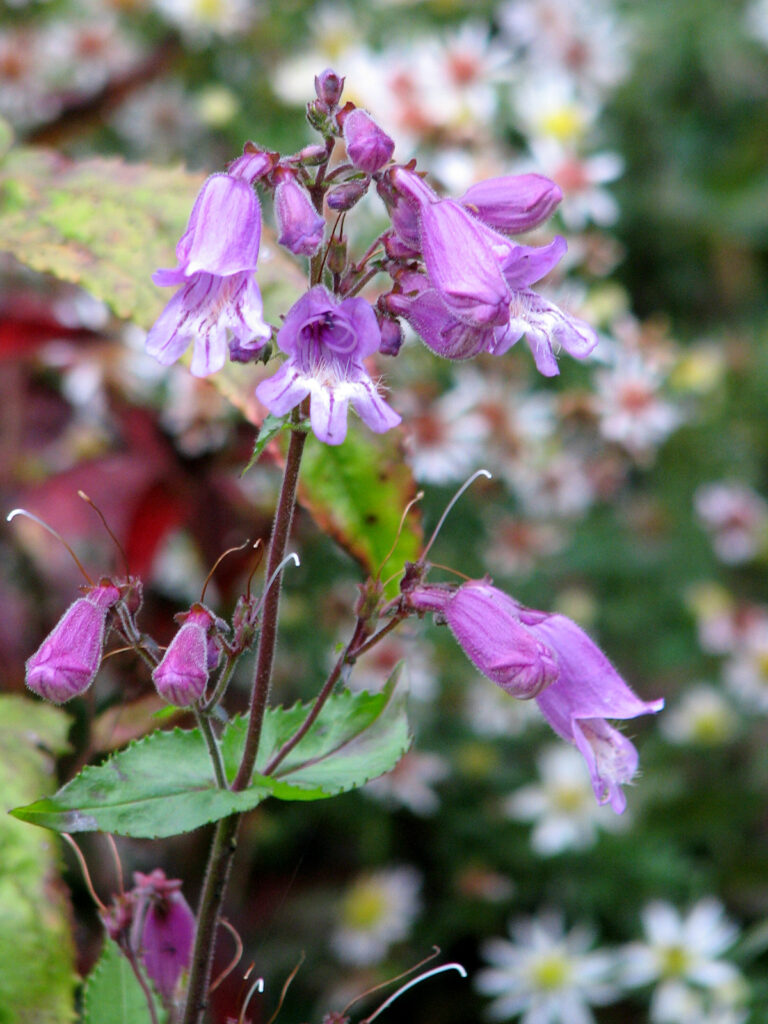
This isn’t a cultivar, but rather a species of penstemon that grows farther south. I love the color, and it, too, has lots of nectar. I’ve noticed the hummingbird getting nectar from this.
I’m not sure where I got this plant, but I don’t think I have any surviving and I don’t plan to replace it.
On the other hand, I’d love to grow it in our kids’ gardens in North Carolina!
** SPECIAL VALUE TO NATIVE BEES **
- Learn more:
- Wildflower Center: Small’s beardtongue
Woodland phlox (Phlox divaricata)
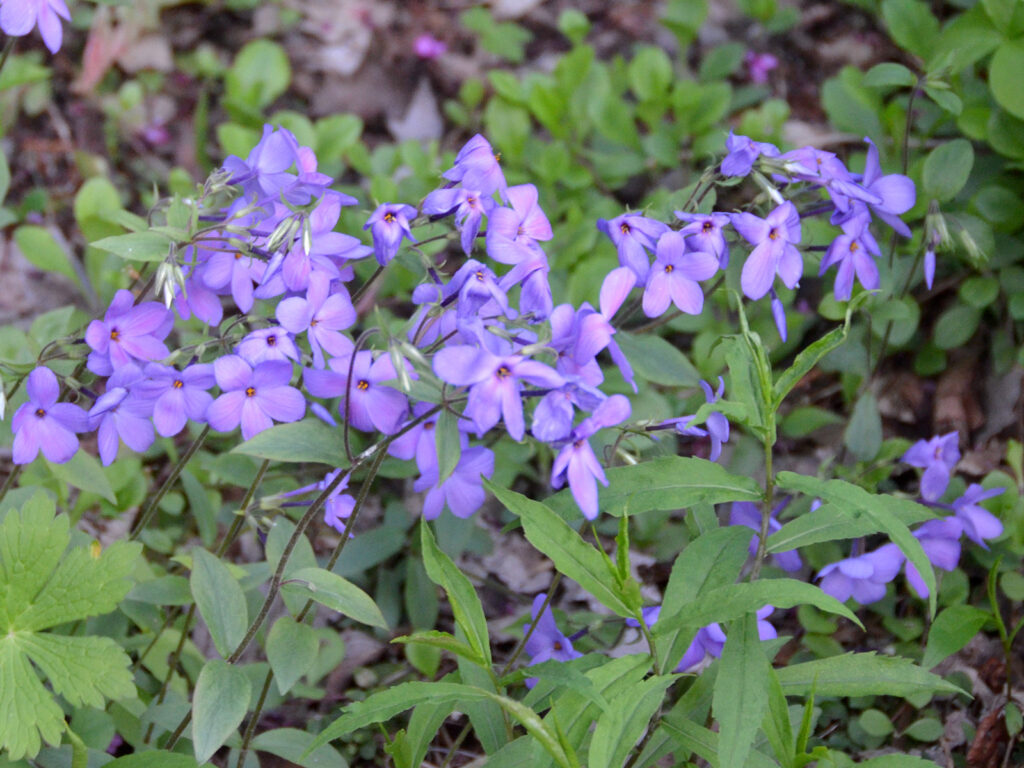
Beautiful color in the spring!
- Learn more:
- Wildflower Center: Woodland phlox
NOT QUITE NATIVE: Summer phlox (Phlox paniculata)
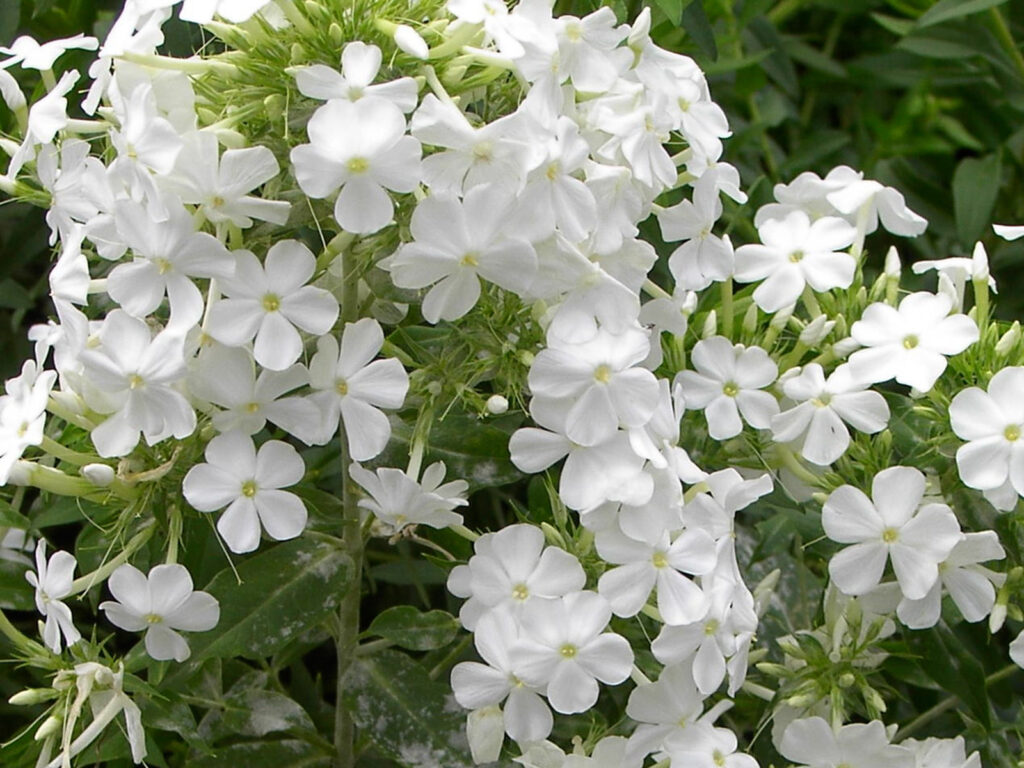
This may be the cultivar ‘Mt. Fuji,’ though I haven’t kept track of which cultivars are which. I do think it’s a cultivar, though.
- Learn more:
- Wildflower Center: Summer phlox
NOT QUITE NATIVE: Creeping phlox (Phlox stolonifera ‘Sherwood Purple’)
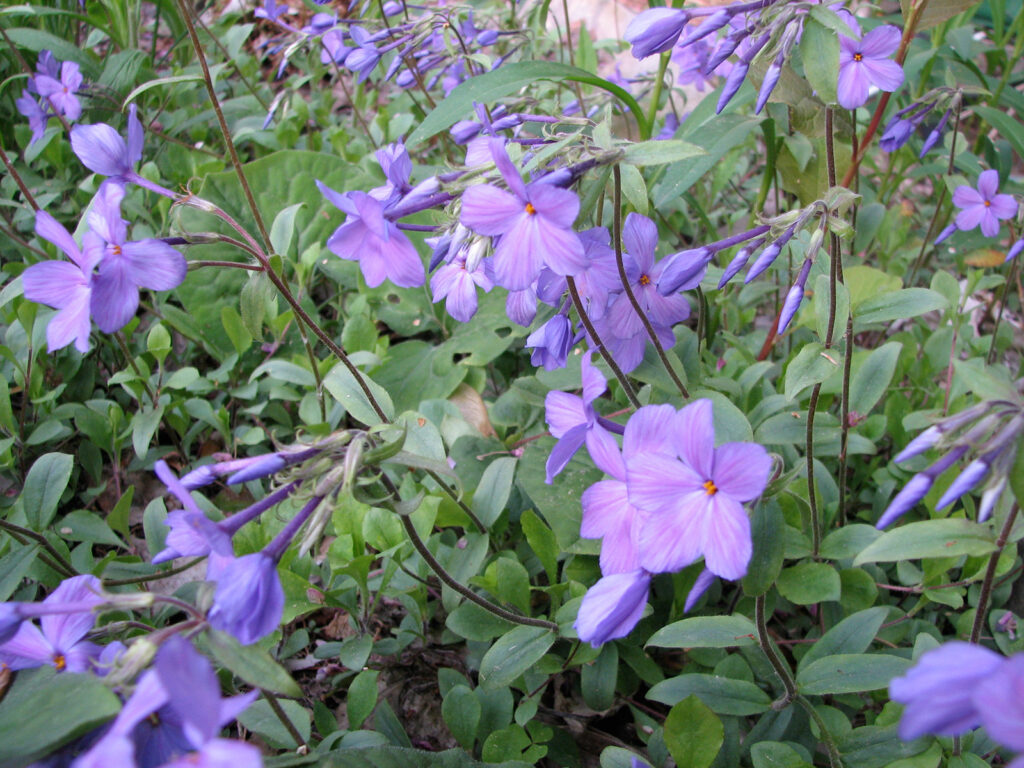
This is a low-growing plant, as you’d expect from a “creeping” anything.
- Learn more:
- Wildflower Center: Creeping phlox
Moss phlox (Phlox subulata)
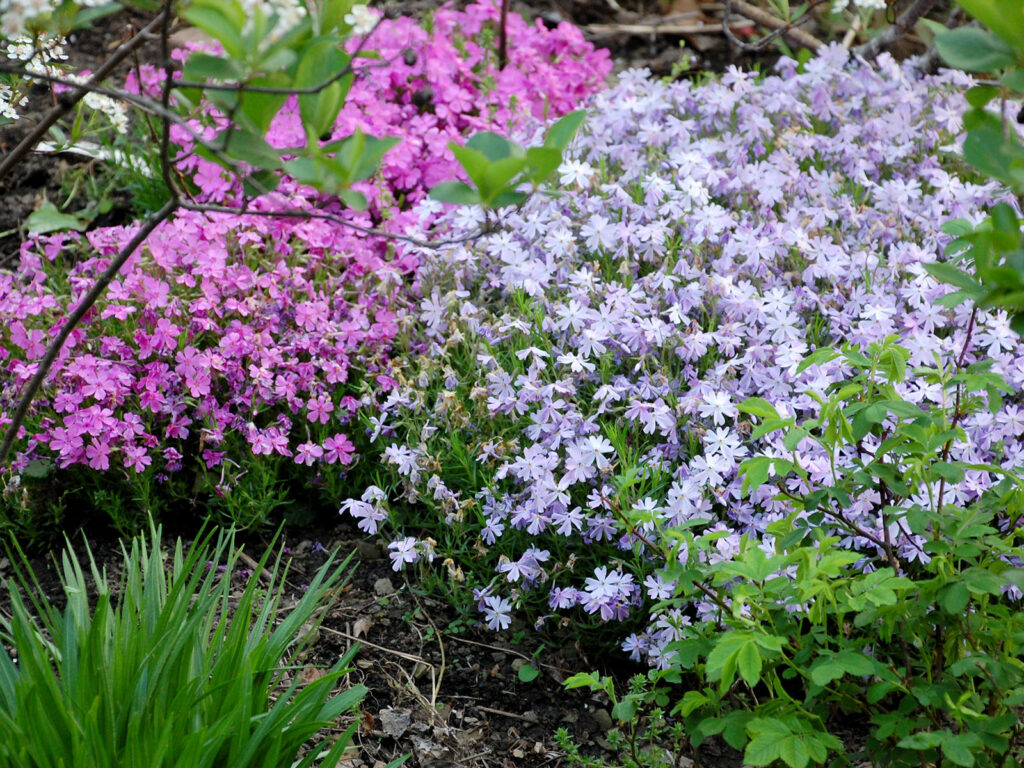
I have a variety of cultivars: ‘Candy Stripe,’ ‘Coral Eyes,’ ‘Emerald Pink,’ and ‘Emerald Blue.’
They all hug the ground, pretty much crowding weeds out and providing a blanket of color in the spring.
- Learn more:
- Wildflower Center: Moss phlox
